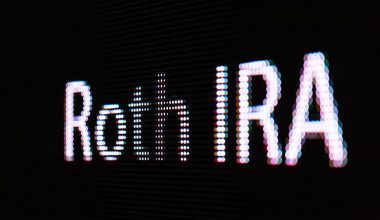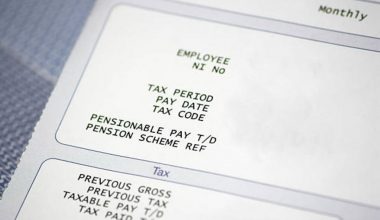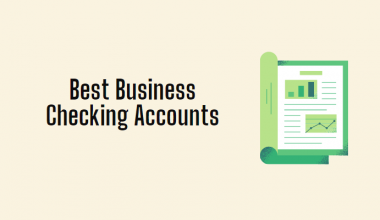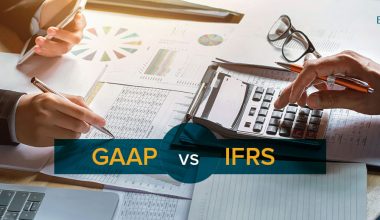The purchase price allocation (PPA) is an important part of the acquisition process because it helps to accurately value the assets and liabilities being bought and also provides important information for financial reporting, tax reporting, and future business decisions. It is a type of acquisition accounting in which the person or company buying a business or company sets aside the right amount of the purchase price for each of the business s’s assets and liabilities. Let’s take a good look at the purchase price allocation of intangible assets, the form, and tax. We will also see a practical example of purchase price allocation as well as everything you need to know.
Why Do You Need a Purchase Price Allocation?
A purchase price allocation (PPA) is a method used in accounting to divide the cost of acquisition among the company’s assets and debts. The main reason why a PPA is necessary is that it helps in determining the fair market value of the assets and liabilities of the acquired company, which is needed for accurate financial reporting.
When a company acquires another company, it typically pays more than the net book value of the acquired company’s assets and liabilities. The excess amount paid is recorded as goodwill on the acquiring company’s balance sheet. The purchase price must be allocated among the assets and liabilities to determine their value. This is important for several reasons:
#1. Accurate Financial Reporting
Allocating the purchase price to each asset and liability of the company bought helps the buyer make accurate financial statements. This is important for investors, regulators, and well as other stakeholders who rely on financial statements to make informed decisions.
#2. Tax Reporting
Tax reporting requires a PPA because the purchase price split affects how assets and liabilities are taxed. For example, the amortization or depreciation of goodwill, intangible assets, and tangible assets may be subject to different tax rules.
#3. Future Business Decisions
A PPA can also help a corporation make future capital spending, investment, and strategic planning decisions.
What Is the Formula for Purchase Price Allocation?
PPA is a method used in accounting to divide the cost of buying a business into its assets and debts. The formula for purchase price allocation is:
Purchase Price = Fair Value of Assets Acquired – Fair Value of Liabilities Assumed
“Fair value” in this calculation is the projected market worth of assets and liabilities at acquisition. Inventory, equipment, patents, trademarks, and goodwill can increase the value of purchased assets. The fair value of the liabilities assumed may include items such as accounts payable, loans, and other debts.
The buyer’s balance statement shows the new values of the business’s assets and debts once the purchase money is divided. This helps the acquirer’s financial accounts reflect the business’s genuine assets and liabilities.
How to Perform Purchase Price Allocation
Following the closing of an M&A transaction, purchase price allocation (PPA) must be performed in accordance with IFRS and U.S. GAAP regulations.
Allocating the purchase price to the acquired assets and liabilities of the target company such that they accurately reflect their fair value is the goal of purchase price allocation (PPA).
Purchase-price-allocation (PPA) procedures consist of the following steps:
- Step 1: Give Fair Value to Specifically Identified Tangible and Intangible Assets
- Step 2: Define Goodwill as the Excess of the Acquisition Price Over the Sum of the Fair Values of the Purchased Assets and Liabilities
- Step 3: Determine the Fair Value of Purchased Assets and Assumed Liabilities
- Step 4: Update the Acquirer’s Pro Forma Balance Sheet with the Results of the Calculations.
What Is Purchase Price Allocation IFRS 3?
Purchase price allocation (PPA) is a way for accountants to figure out how much of the purchase price should go to the assets and liabilities acquired in a business merger. International Financial Reporting Standards 3 (IFRS 3) and generally accepted accounting principles (GAAP) say that it must be done.
PPA splits a business combination’s purchase price between its assets and liabilities depending on their fair valuations at the time of acquisition. Modern commercial mergers sometimes include trademarks, patents, and customer relationships in the purchase price.
If the acquisition price is less than the fair value of the assets, the income statement shows a gain.
PPA helps business combinations’ financial accounts reflect the transaction’s true value. PPA improves investors’ and stakeholders’ understanding of the merged entity’s worth and the acquirer’s performance by allocating the acquisition price to the fair values of the acquired assets and liabilities.
Who Prepares Purchase Price Allocation?
Most often, the PPA is done by a group of experts, such as accountants, financial analysts, and valuation experts. A chief financial officer or a director of accounting are typical team leaders in the financial or accounting fields.
The PPA process can be complicated because it requires finding and valuing all of the assets and debts of the business being bought. This needs a careful look at the financial statements and other important information about the business that was bought.
The PPA team may collaborate with the acquirer’s management and legal advisors to comply with accounting and tax requirements. The PPA determines the fair value of the acquired business and its assets, which affects financial reporting, taxation, as well as other business choices.
What Is the Impact of Purchase Price Allocation?
The impact of purchase price allocation (PPA) can be significant for both the acquiring company and the acquired company. Some of the key impacts of PPA include:
#1. Impact on Financial Statements
The company buying alters its balance sheet and income statement after the PPA process determines the fair value of the assets and liabilities purchased. The fair value adjustments can impact revenue recognition, amortization, depreciation, as well as other financial metrics.
#2. Impact on Taxes
The PPA can also impact tax calculations as it affects the book value of assets and liabilities. This can result in changes to tax basis, depreciation and amortization deductions, and other tax-related items.
#3. Impact on Operations
The PPA process may modify how the purchased company allocates resources, staff, and money. Reporting, systems, and processes may need to be modified, which may affect the bought company.
#4. Impact on Investment Decisions
The results of the PPA process can impact investment decisions, as it provides insight into
What Does PPA Mean in Accounting?
Generally, purchase price allocation is a method used in business combinations, mergers, and acquisitions to divide the cost of buying a business between its assets and debts.
In the PPA process, the assets as well as liabilities of the business being bought, are listed and valued. This includes tangible assets like equipment and inventory, intangible assets like patents, copyrights, and goodwill, and liabilities like loans and accounts payable. The goal of the PPA process is to determine the fair value of the assets and liabilities while acquiring them.
In the acquirer’s financial accounts, the PPA adjusts the acquired company’s assets and liabilities to fair value. This ensures that the bought business’s financial statements accurately reflect its assets and liabilities. The PPA ensures financial clarity in company combination agreements.
What Is the Difference Between IFRS 10 and IFRS 3?
The International Accounting Standards Board (IASB) has issued two accounting standards related to business combinations, IFRS 10 and IFRS 3, but they focus on different aspects of the procedure.
IFRS 3—Business Combinations tells businesses how to record the purchase of a business or a share of a business. This standard explains the rules for recognizing and valuing the assets and liabilities of the acquired entity, as well as any non-controlling interests in it. IFRS 3 also says that the acquirer has to account for goodwill, which is the difference between the purchase price and the fair value of the assets and liabilities that were bought.
IFRS 10, which is called “Consolidated Financial Statements,” tells companies how to make and present consolidated financial statements when they control one or more other companies. The standard says how to figure out if an entity should be included in the consolidated financial statements and how to account for non-controlling interests.
In short, IFRS 3 is about how to account for a specific merger or acquisition, while IFRS 10 is about how to make and present consolidated financial statements for a business that controls one or more other businesses. Both standards are important for companies engaged in business combinations, and they work together to ensure that the financial statements accurately reflect the value of the acquired business and its impact on the acquirer’s financial position.
Purchase Price Allocation Example
To better understand purchase price allocation in the acquisition of assets and liabilities, let’s see this example. The IFRS 10 and IFRS 3, released by the International Accounting Standards Board (IASB), address different aspects of company combinations.
IFRS 3
Business combinations guide accounting for the acquisition of a business or an equity interest in a business. This standard explains the rules for recognizing and valuing the acquired entity’s assets, liabilities, and non-controlling interests. Goodwill, the difference between the purchase price and the fair value of the assets and liabilities bought, must also be accounted for under IFRS 3.
IFRS 10
Consolidated Financial Statements—shows how to make and present consolidated financial statements when an entity controls one or more other entities. The standard says how to figure out if an entity should be included in the consolidated financial statements and how to account for non-controlling interests.
In short, IFRS 3 is about how to account for a specific merger or acquisition, while IFRS 10 is about how to make and present consolidated financial statements for a business that controls one or more other businesses. Both standards are important for companies that merge with other businesses, and they work together to make sure that the value of the acquired business and how it affects the acquirer’s finances are accurately reflected in the financial statements.
Purchase Price Allocation Example
Sure, here’s an example of purchase price allocation:
Assume that Company A acquires Company B for a purchase price of $10 million. Company B had the following visible assets and liabilities, and also their fair values, at the time of the acquisition:
Inventory: $2 million
Property, plant, and equipment: $4 million
Patents: $1 million
Accounts payable: $1 million
Accrued expenses: $500,000
The total fair value of the identifiable assets and liabilities is $8.5 million, which means that there is $1.5 million in goodwill that needs to be recorded.
The purchase price allocation for this acquisition would be as follows:
Inventory: $2 million
Property, plant, and equipment: $4 million
Patents: $1 million
Accounts payable: ($1 million)
Accrued expenses: ($500,000)
Goodwill: $1.5 million
The goodwill of $1.5 million represents the excess of the purchase price of $10 million over the fair value of the identifiable assets and liabilities acquired.
The purchase price allocation will affect the acquirer’s financial statements because it will change the value of the acquired assets and liabilities and cause goodwill to be recognized. The balance sheet of the acquirer will show the fair values of the assets and liabilities that were bought, and the income statement will show the amortization of any intangible assets and, if necessary, the impairment of goodwill.
Tax Purchase Price Allocation
Tax purchase price allocation (PPA) refers to the allocation of the purchase price of an acquired business for tax purposes. Generally, the tax purchase price allocation is used to figure out the tax basis of the assets and liabilities acquired in a business merger, which is then used to figure out the tax effects of the merger.
When two companies merge, the company that buys the other may have to divide the purchase price between the acquired company’s assets and debts. This allocation is based on the fair value of the assets and liabilities at the time of the acquisition. For tax purposes, the allocation must be done in a way that follows the rules in the Internal Revenue Code (IRC).
The tax PPA process involves figuring out the fair value of the assets and debts of the company that was bought. The fair value is then used to allocate the purchase price among the assets and liabilities based on the IRC regulations. The tax basis of the acquired assets and liabilities will be used to figure out tax deductions and credits related to the acquisition, such as depreciation and amortization deductions.
It is important to note that the tax PPA may differ from the financial PPA, as the IRS has specific regulations and rules for determining the tax basis of assets and liabilities. The differences between the two methods can result in different tax implications for the acquiring company.
Overall, tax PPA is an important aspect of business combinations, as it determines the tax basis of the assets and liabilities acquired, which affects the tax implications of the acquisition. It is important to follow the IRC regulations when conducting tax PPA to ensure compliance with tax laws and regulations.
Purchase Price Allocation Form
There is no standard form for purchase price allocation (PPA), as the allocation process can vary depending on the specific transaction and the parties involved. The accounting standards or tax laws of the nation or jurisdiction where the transaction takes place may have an impact on the format and content of the PPA report. Companies may also use templates or software tools to facilitate the PPA process and produce a PPA report. However, a PPA report typically includes the following information:
- Identification of the acquired and acquiring companies.
- Date of the acquisition.
- Purchase price of the acquisition.
- Identification of the acquired company’s assets and liabilities, including intangible assets such as goodwill, patents, and trademarks.
- Fair value assessment of the acquired company’s assets and liabilities at the time of the acquisition.
- Calculation of the goodwill recognized as a result of the acquisition.
- Goodwill recognized as a result of the acquisition is calculated.
- Calculation of the tax basis of acquired assets and liabilities.
- Explanation of the methods used to determine fair value and also the assumptions used in the process.
- Disclosure of any uncertainties or contingencies related to the fair value assessment or the allocation process.
- References to any relevant accounting standards, tax laws or regulations, as well as any other authoritative guidance used in the allocation process
Purchase Price Allocation Intangible Assets
Intangible assets are a big part of purchase price allocation (PPA) because they can be worth a lot when two businesses join together. The following are examples of intangible assets that may be recognized in a purchase price allocation:
#1. Goodwill
This is the excess of the purchase price over the fair value of the identifiable net assets acquired. Generally the value of a company’s reputation, customer base, and other things that can’t be found and valued separately.
#2. Patents and Trademarks
These are legal rights that protect inventions, designs, as well as brands.
#3. Customer Relationships
These are the relationships that the acquired company has with its customers. They may generally include customer lists, contracts, and other customer-related information.
#4. Technology
This includes software, algorithms, and other proprietary technology that the acquired company owns.
#5. Contracts
These are agreements that the acquired company has with suppliers, customers, or other parties.
#6. Non-compete Agreements
Non-compete agreements are generally contracts that say the owners or key employees of the company being bought can’t work for a competitor for a certain amount of time.
#7. Licenses and Permits
These are legal rights that allow the acquired company to operate in a certain industry or location.
When recognizing intangible assets in PPA, it is important to determine their fair value at the time of the acquisition. This may involve the use of valuation techniques such as the income approach, the market approach, or the cost approach. For the valuation, assumptions, and estimates may also be needed. These should be based on data that can be trusted and checked.
When intangible assets are recognized in a PPA, it can change how amortization, depreciation, and tax deductions are calculated, which can have big financial and tax effects on the company that buys them. Therefore, it is important to carefully evaluate and document the value and useful life of the intangible assets in the PPA report.
Related Articles
- IFRS (International Financial Reporting Standards) List, Requirements, Compliance & Benefits
- WHAT IS ALLOCATION: Meaning, Cost, Method & Beneficiary
- IFRS Accounting Explained!!! (+ 2022 Trends and Techniques)
- ALLOCATION OF ASSETS: Meaning, Types, and Example






